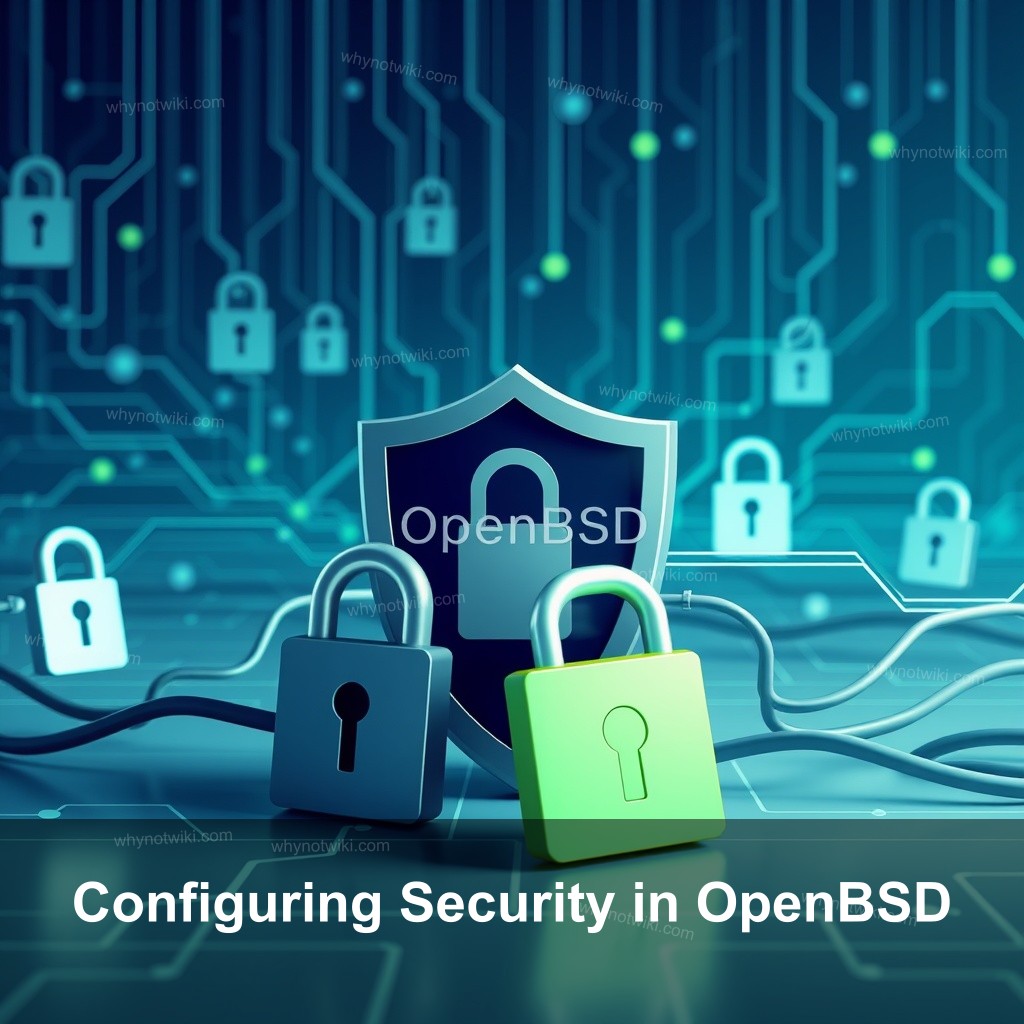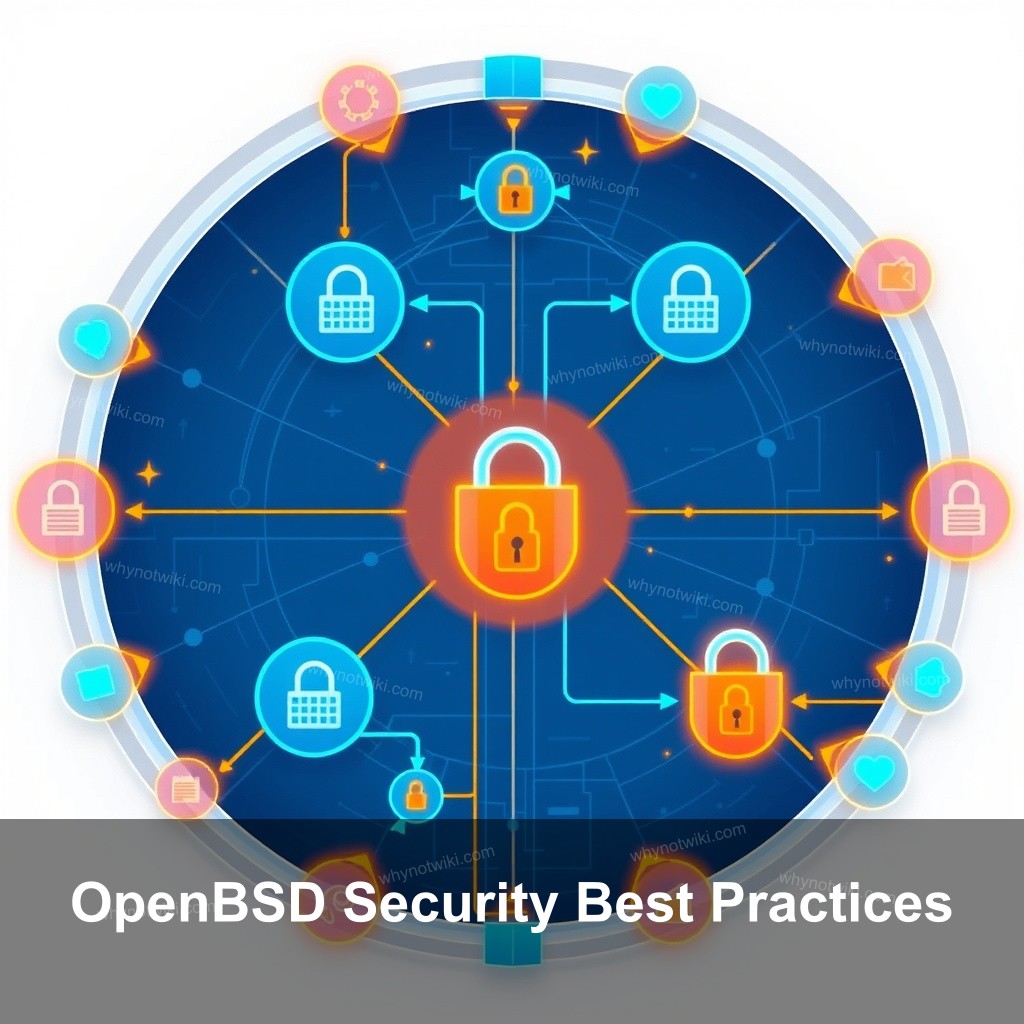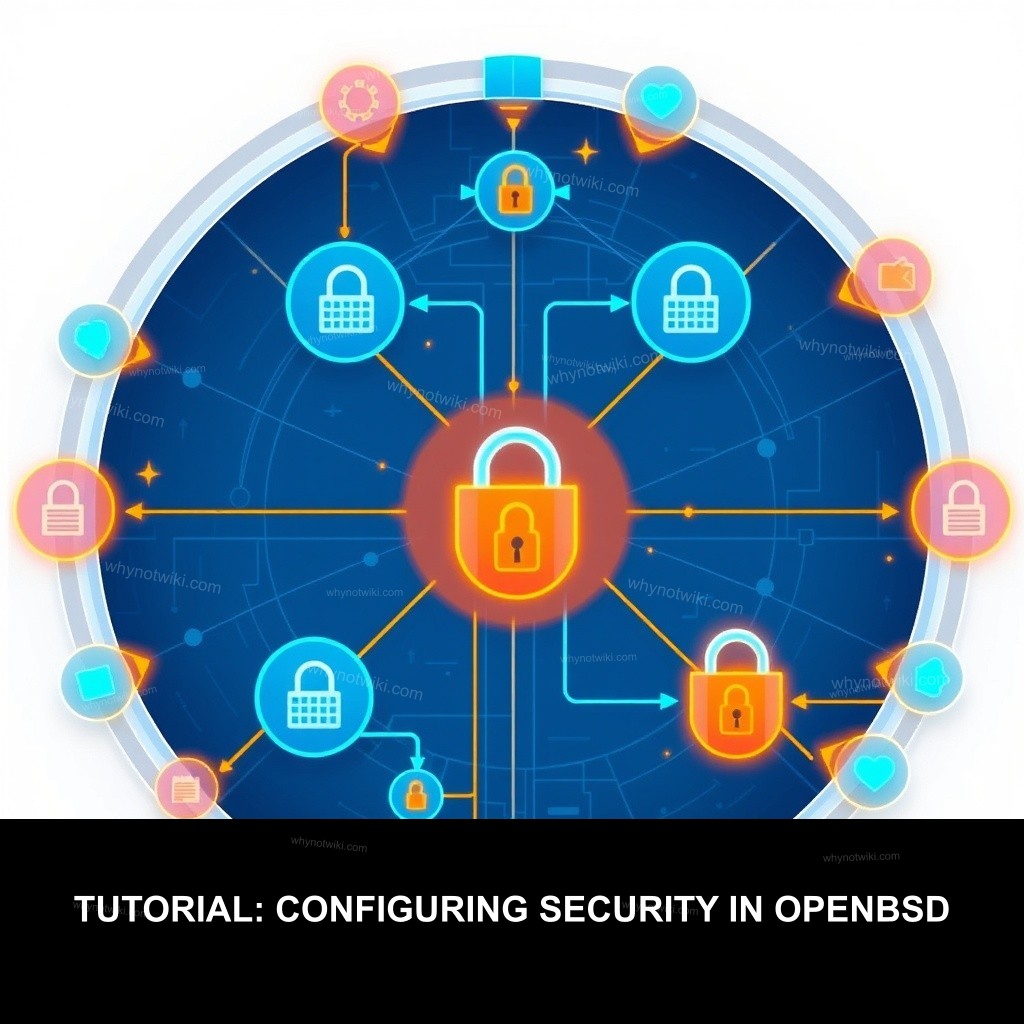In today’s digital environment, securing your operating system is critical. For users of OpenBSD, known for its focus on security, knowing how to configure security settings effectively is important. This tutorial by WhyNotWiki will guide you through the essential steps to improve your OpenBSD security configuration. You’ll learn useful practices, tips for beginners, and advanced techniques to secure your installations and maintain a strong environment.

Configuring Security in OpenBSD
Understanding the security features of OpenBSD is the first step toward effective configuration. OpenBSD is designed with a “secure by default” philosophy, meaning that many services are not enabled out of the box, reducing potential vulnerabilities. However, as a user, it’s essential to take extra steps to harden your system further.
Introduction to OpenBSD Security Configuration
Security in OpenBSD is not just about preventing unauthorized access; it also involves managing how services are configured and maintained. OpenBSD comes equipped with various built-in tools and features that can help you secure your installation effectively.
| Feature | Description | Benefits |
|---|---|---|
| Packet Filter (PF) | A firewall that manages network traffic. | Reduces exposure to threats. |
| Secure User Permissions | Allows management of user roles and access. | Limits unauthorized access. |
| Documentation | Guides users through security best practices. | Increases user understanding of security. |
Setting Up Security on OpenBSD
After installation, one of the first steps is to configure your security settings. Here’s how to do it effectively:
- Step-by-Step Security Setup: Start by disabling services you don’t use. If FTP or Telnet isn’t needed, turn them off using commands like
rcctl disable. - User Permissions and Access Control: Implement role-based access control. Limit user permissions to what is necessary. Manage user roles in
/etc/groupand/etc/passwd. - Security Updates Management: Regularly check for updates using
syspatchandpkg_add -u. Keeping your system up to date is key to protecting against vulnerabilities.

OpenBSD Security Best Practices
To maintain a high level of security, consider integrating the following best practices into your OpenBSD security practices:
Essential Security Practices
Regularly auditing your system for vulnerabilities is necessary. Use tools like OpenVAS or nmap for scanning your installation. These tools can help identify potential issues and help you fix them before they become serious threats.
Another important practice is implementing strong firewall rules using PF. A customized /etc/pf.conf file can help shield your system from unwanted traffic. For instance, here is a basic rule set:
block in all
pass out keep state
This configuration allows outbound connections while blocking all incoming traffic by default.
OpenBSD Security Tools Overview
OpenBSD includes several built-in tools that enhance your security configuration:
- PF (Packet Filter): Essential for managing network traffic.
- SSH: Securely manage your server remotely with this tool.
- OpenBGPD: Manage BGP routes securely.
Additionally, consider third-party tools like OpenBSD security and networking guide, an open-source host intrusion detection system that can effectively monitor your OpenBSD installation.
Beginner Tips for OpenBSD Security
For those new to OpenBSD, it’s important to grasp some fundamental security practices:
Getting Started with OpenBSD Security
Your initial setup can make a big difference. Start by reviewing your security settings right after installation. Ensure you know how to use Find My iPhone and similar tools effectively.
Here are a few tips:
- Initial Setup Checklist: Disable root login over SSH and change the default port to avoid automated attacks. An example command is:
- Understanding the Documentation: OpenBSD has extensive manuals. Familiarize yourself with resources available.
- Community Resources and Support: Join forums and mailing lists to learn from other users’ experiences.
sshd_config
Security Pitfalls to Avoid
Everyone makes mistakes, especially when starting out. Here are common errors:
- Using default passwords: Always change them immediately.
- Neglecting updates: Ensure your system is regularly updated.
- Ignoring logs: Regularly check your logs for unusual activity.
Advanced OpenBSD Security Techniques
For experienced users looking to strengthen their security postures, consider these advanced techniques:
Implementing Advanced Security Measures
Using virtualization can isolate your applications. If one of your apps is compromised, the attacker cannot access your entire system.
On top of that, integrating IDS/IPS systems will add another layer of security:
- Using Snort: This tool can monitor network traffic for suspicious activity.
- Network Segmentation: Dividing your network can limit exposure if one section is compromised.
Threat Modeling and Risk Assessment
Key is knowing possible hazards. Create a threat model noting possible hazards and their effects. Frequent risk analyses help you to keep ahead of weaknesses.
Develop an incident response plan detailing how to react if a breach occurs. This plan should include contact details and steps for communication and mitigation.
FAQ
What are the best practices for OpenBSD security?
Some best practices include regularly updating your system, configuring the firewall properly, and auditing user permissions to ensure only necessary access is granted.
How do I set up security on OpenBSD?
Begin with disabling unnecessary services, configuring PF for your firewall needs, and managing user permissions effectively.
What tools can help with OpenBSD security?
OpenBSD includes tools like PF for firewall management and SSH for secure remote access. Additionally, consider using OSSEC for intrusion detection.
How often should I update my OpenBSD installation?
Regular updates are recommended, ideally every few weeks or as new security patches are released.
What should I do if I suspect a security breach on my OpenBSD system?
Immediately review your logs, change passwords, and consider restoring from a backup if you confirm a breach occurred.
Conclusion
Securing your OpenBSD system requires diligence and knowledge. By following the practices outlined in this guide, you can significantly strengthen your security posture. For further information and resources, feel free to explore more articles on WhyNotWiki.

0 Comments